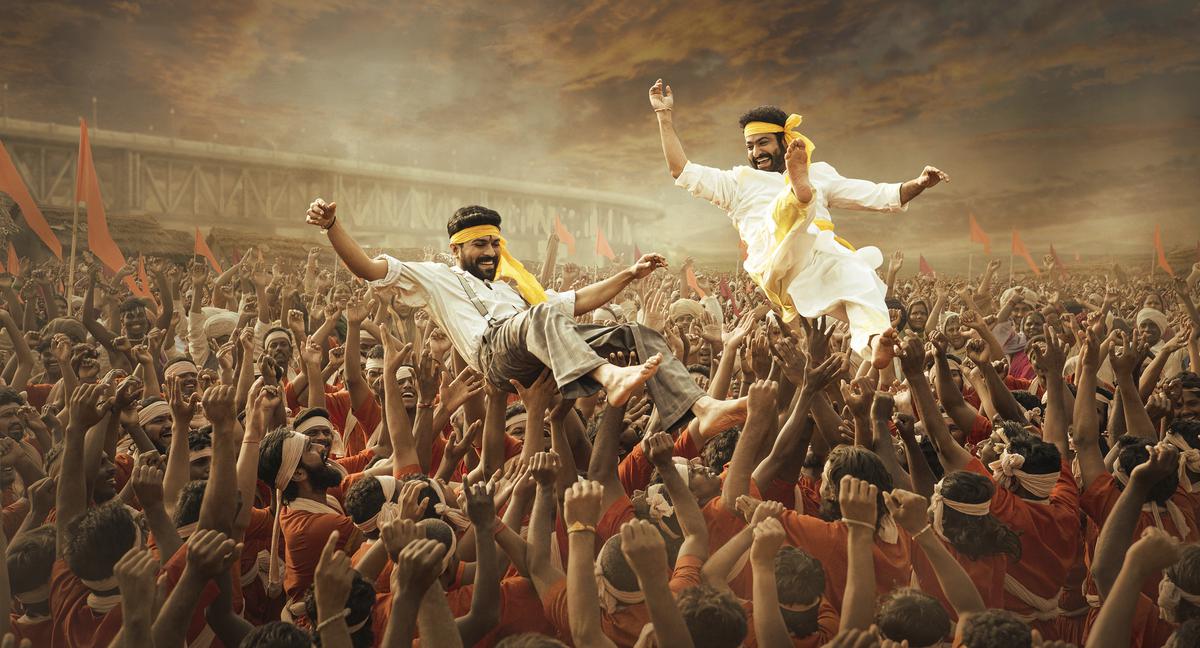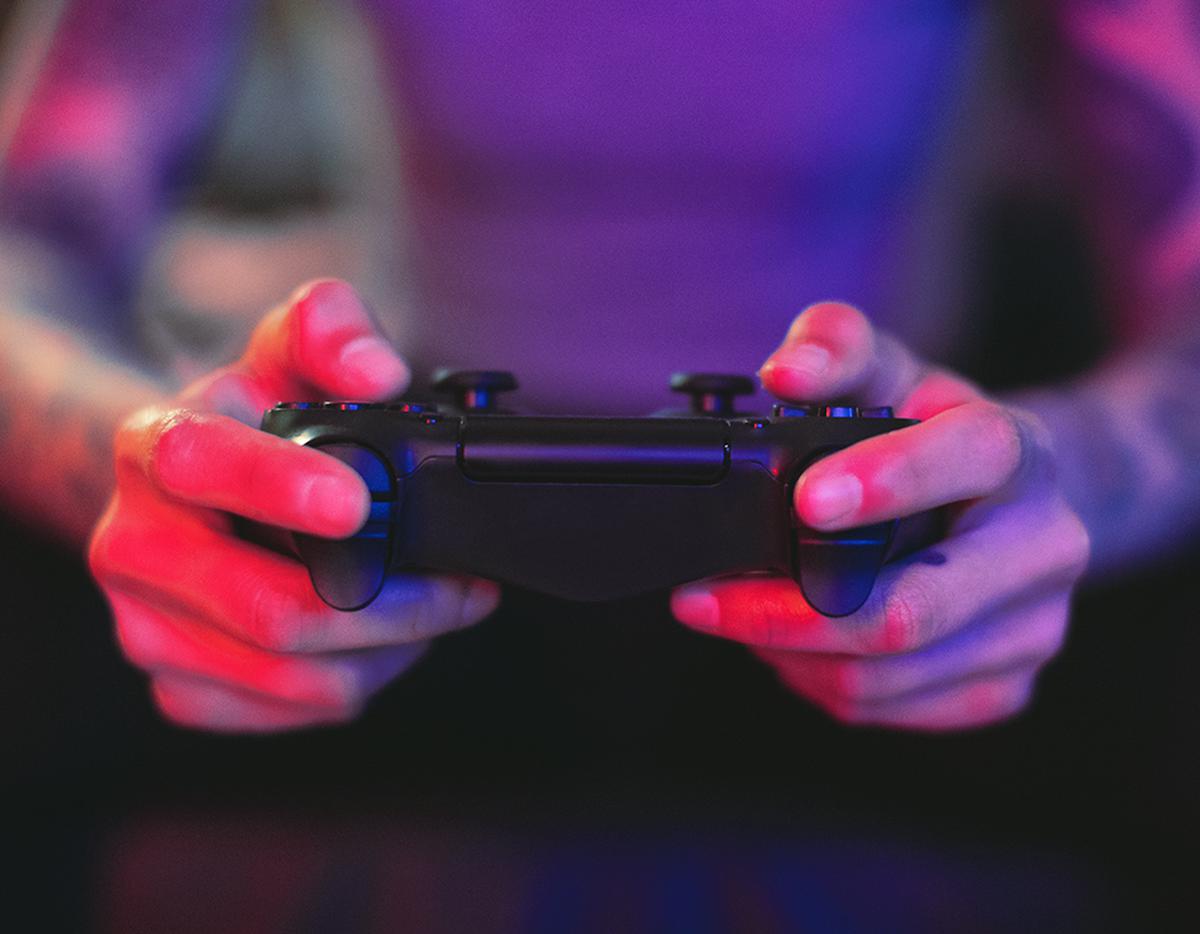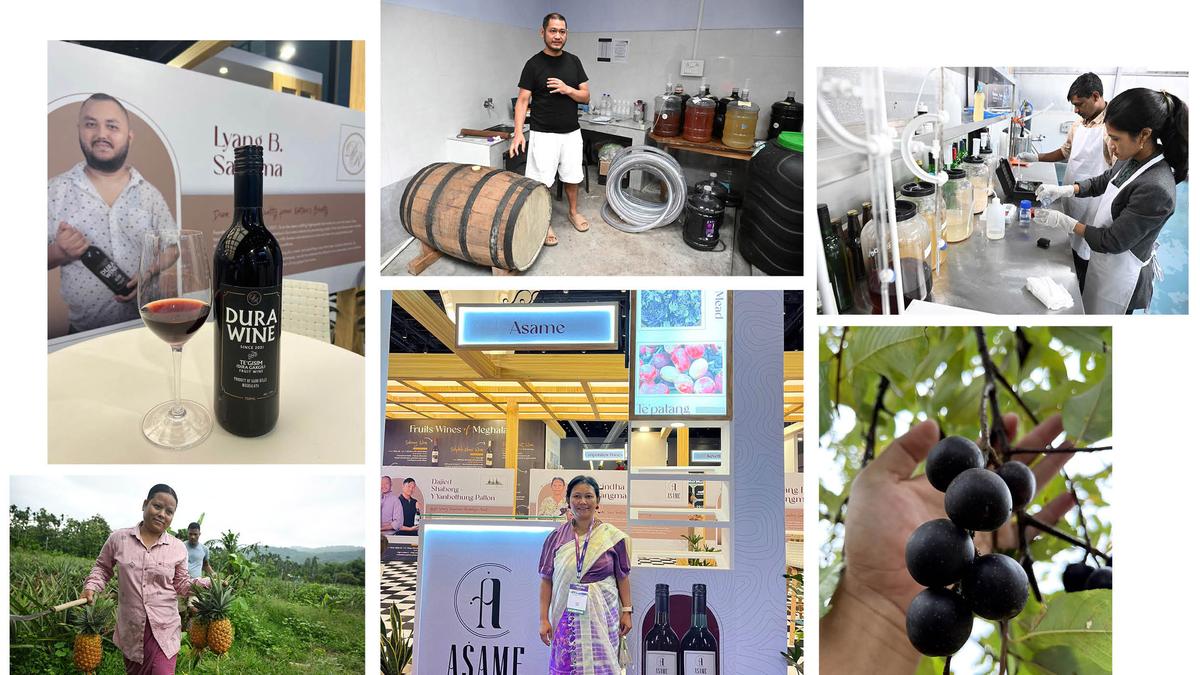#food
Technical, yet intimate
Restaurant Chilling Out Classy Lifestyle Reserved Concept lead pics Food
| Photo Credit:
Rawpixel
In 2019, trend forecasters predicted more family dining, fermented foods and soufflé pancakes, not a raging pandemic.
Nevertheless, the world found ways to pivot, innovate and move forward, and the restaurant industry fought back fiercely. Over this year we have seen a burst of restaurant openings, creative food start-ups and clever collaborations, all infused with a sense of gratitude for the ability to gather in bars and restaurants again. Even with the threat of COVID-19 constantly looming, what can you expect to see in the coming year, based on gains from the past?

Humanoid robot maid serving in the white modern kitchen. lead pics
| Photo Credit:
imaginima
Getting technical: This year we used dosa printers, idli ATMS and humanoid concierges. Processes that streamline businesses will stay and grow. These will focus on eliminating tedious, repetitive work, leaving space to hire people for roles that require creativity and empathy. Expect more adaptive, flexible kitchen solutions, 3D menus, self-service restaurants and increased supply chain transparency thanks to QR codes.
Responsible dining: It has been a good year for oat milk, vegan burgers and kombucha. As younger customers demand a more responsible approach to food, plant-based alternatives will thrive and their quality will keep improving. Also, with a healthier approach to eating, you will see a rise in ‘no alcohol’ drinks, vegetarian main courses and CBD laced ‘mood-foods’.
Gourmet to go: With advances in retort packing, frozen food and cold supply chains, it is now possible to whip up a designer dinner in a microwave, whether it is momos in minutes, or an entire, packaged Kerala sadya from your larder. As companies race to create more elaborate options, finding ways to concentrate flavours with minimum effort, meal prep will keep getting easier requiring you to only rehydrate, heat or even just snip open a packet for lunch.
CHENNAI, TAMIL NADU, 01/09/2022: Evochef dosa machine.
Photo: Velankanni Raj B/ The Hindu
| Photo Credit:
VELANKANNI RAJ
Intimate dinners: The pandemic reminded us about the joy of gathering in small groups. With the rise of dinner parties at home came a slew of catering options, from chefs and bartenders for hire to cheese boards and curated menus on order. Prompted by the loneliness of lockdowns, restaurants have also been creating communal tables and hosting events to encourage community dining. Quality over quantity, with food and relationships, will characterise next year.
Gourmet getaways: Goa becoming India’s restaurant capital proved that people will now travel for food, and this has encouraged the rise of luxury destination restaurants. From Farmlore in Bengaluru to Tsas by Dolkhar in Ladakh, these high-energy spaces thrive on experimentation. They also find ways to preach sustainability and responsible dining using thoughtfully sourced and meticulously plated multi-course menus. Diners have responded with enthusiasm, so expect more unique restaurants in unexpected spaces, and meals filled with local greens, seasonal vegetables and sustainable seafood.
#wellness
Plant-based nutrition and sleep pods

Attractive happy young woman working out indoors. Beautiful model doing exercises on blue mat in room with white walls. Standing in low lunge exercise, anjaneyasana. Full length. Side view
| Photo Credit:
FIZKES
The last few pandemic-hit years have no doubt shifted gears in our lives — physically and mentally. The slow way of life now takes precedence for many, and this relaxed pace has influenced the way we eat, move and feel. Now, after a year of zero-alcohol menus, plant-based nutrition, sleep pods and a strong focus on mental health, the future of the $1.5 trillion wellness market is brighter than ever.
Sustainable solutions rooted in science are now the buzz words, and as we usher in a new year, the health and wellness sector is all set for the return of old school philosophies in a new-age avatar. The Global Wellness Trends Report 2022 (by Global Wellness Summit) points at 10 new trends for 2023, with Next-Gen Naturalism touted as one of the next big things. The past few years have seen many letting go of city lives and getting closer to Nature. People taking to farming, launching agri-support start-ups and putting the farmer centre stage are trends that have been gaining popularity. The lockdown years have only accelerated this trend, and the report highlights how the ‘self-sufficiency boom is playing out in diverse ways, from the global growth of outdoor survival schools to the boom in foraging and homegrown produce’. Next-gen naturalism, it states, ‘is a back-to-basics wellness that refocuses on the natural world and ancient practices to prepare for a shaky future’.
TO WITH AFP STORY: US-SOCIETY-HEALTH-COMPANIES
Metronaps CEO Arshad Chowdhury (R) and another employee demostrate sleeping “pods” in a darkened room at a Metronaps location in the Empire State Building, 16 February 2007, in New York. MetroNaps caters to employers who are looking to get more productivity out of their empployees by providing a place where they can nap, recharge and get back to work. A recent study undertaken by US and Greek scientists showed that a regular nap reduced, by more than one third, deaths due to the heart attacks. AFP PHOTO/Stan HONDA =MORE PHOTOS IN IMAGE FORUM=
| Photo Credit:
STAN HONDA
Even fitness experts hint at this philosophy influencing the way people will workout — think restorative yoga, sleep meditations, slow workouts and less of HIIT sets and pilates. With AI and tech pervading every realm, the wellness segment is not far behind. 2023 will be the year of the wellness metaverse, predicts GWS. Enabling VR as a pain-management tool, it will also work as corrective therapy for certain ailments, and to treat phobias, and anxiety. Soon, we will see gyms in the metaverse, and users seamlessly booking fitness sessions and even a doctor’s appointment with a VR headset.
The dialogue around mental health too continues in 2023, albeit with a more focussed approach. Behavioural health will have a key focus not just at the workplace, but at the dinner table too. Parents are more aware of developmental challenges, especially in a post-lockdown world that has impacted children in many, still unknown ways. We look forward to more awareness on mental health issues, opportunities and access to care, and tech tools to diagnose and treat conditions.
#fashion
Hyper-personalised luxury

lead pics
| Photo Credit:
10016
Transparency, traceability and sustainability will be the dominant trends for the luxury fashion industry in 2023, while it explores untapped avenues of growth and continues to confront global macroeconomic concerns. A recently-released McKinsey report expects global luxury fashion sales growth of 5% to 10%, and a negative 2% to positive 3% for the rest of the industry in 2023.
’Among the rising stars, India stands out for growth potential’, states a Bain & Company–Altagamma study on the global luxury goods market. The report also predicts that India’s luxury market will expand 3.5 times today’s size by 2030. Already home to high-fashion brands such as Louis Vuitton, Burberry and Tiffany & Co, the new year will see more luxury brands drop anchor on Indian shores to woo its budding market. Next year, Spanish fashion house Balenciaga will open its first store in India and Valentino its second. . Parisian multi-brand fashion store Galeries Lafayette will begin building its massive 90,000 square feet store in India, spread across two historic buildings in South Mumbai.
While luxury fashion brands recognise the potential of untapped markets, they are also realising the relevance of Web3 in attracting digital natives. The fast developing virtual worlds of online gaming and metaverses can no longer be brushed off as a passing fad. According to another Mckinsey report, worldwide spending on virtual goods reached more than $100 billion in 2021, more than double of 2015. Virtual fashion assets contributed to 30% of these revenues. 2023 will see more investments in Web3 from popular fashion brands including Gucci, Dolce & Gabbana, Nike, Prada, Givenchy who successfully decoded their virtual presence with either phygital collections or digital wearables and assets in 2022.
Hyper personalisation of customer experiences will also influence the future of luxury fashion’s digital businesses. Advancements in artificial intelligence (AI), analytics, and cloud computing will arm them with all types of data across channels in real time.
Blockchain technology will become an inherent part of the luxury industry’s digital evolution in 2023 as an increasing number of brands adopt it in their mainstream functions. Setting an encouraging example, leading names such as LVMH, Richemont, Mercedes Benz and even De Beers have been using and promoting the efficacy of blockchain for transparency and traceability. Blockchain’s immutable record keeping capability is also equipping luxury brands to fight the multi-million dollar counterfeit market.
The ultimate factor that will shape the reputation of luxury fashion brands in the near future are the actions they take against their adverse impact on the environment. According to a United Nations report, the fashion industry is highly greenhouse gas intensive, with estimated emissions ranging between 2% and 8% of the global total! Consumers, especially younger buyers, are becoming increasingly aware of the impact of their purchases on the environment. According to a recently released study by Bain and Co., about 15% of global fashion consumers are already highly concerned about sustainability and consistently make purchasing decisions to lower their impact. That percentage could increase to more than 50% in the coming years as more shoppers gravitate toward sustainable practices. 2023 will be the year for brands to execute genuine pro-planet measures.
#cinema
All for OTT

Ponniyin Selvan stills
| Photo Credit:
SPECIAL ARRANGEMENT
In 2022, Indian films went from strength to strength. Even as cinema halls saw the return of audiences for some big-screen entertainment — which they sorely missed in the years post the outbreak of COVID-19 and the induced lockdown — OTT players were not far behind in terms of pushing content. 2023 looks to be an exciting year, because:
Filmmakers are digging into the past like never before, and it is paying rich dividends. If Kantara turned an age-old Kannada tradition into a blockbuster, Mani Ratnam’s Tamil film Ponniyin Selvan-1 was an on-screen adaptation of a literary classic. PS2 is coming up next year, and there is more to come. Clearly, the past is in vogue.
The big guns of Bollywood will strike, yet again. If Salman Khan and Ajay Devgn are looking to take the action and sporting route with their Tiger 3 and Maidaan respectively, there is also a Karan Johar special in the making, with his ensemble cast-led Rocky Aur Rani Ki Prem Kahani, a film that might likely get families into the theatres. And boy, are we not all waiting to see Shah Rukh Khan back on the big screen after a long break, with Pathaan, Jawaan and Dunki? 2023 might just be his year.
Hindi cinema still has the Khans, but it is the South Indian film industry that is actually drawing global attention. Look no further than Rajamouli’s RRR that has got the attention of cinema lovers and critics across the globe. With major South Indian biggies planned for 2023, including Rajinikanth’s Jailer and Kamal Haasan’s Indian 2 in Tamil, up is the way to go. Kannada cinema will be keenly followed this year, thanks to the attention it is getting post KGF and Kantara.

The advent of OTT platforms meant two things: we could watch a film in the comfort of our homes a few weeks after its theatrical release, and binge-watch web-series. Indian content makers have taken to web-series in a big way, especially because it lets them tell stories at their own pace and setting. This has given rise to several OTT series’ stars, who are trying to cement their place in the digital sphere avoiding the crowded film marketplace. Stars including Shahid Kapoor, Kajol and Urmila Matondkar are trying their luck in this space too, which gives them the scope to explore characters that they may not be able to play in the feature film format. While many successful series plan their second or third seasons this year, 2023 will also see fresh content, not just in Hindi but in many regional languages as well.

This image released by Netflix shows Ram Charan and N.T. Rama Rao Jr. in a scene from “RRR.” (Netflix via AP)
We are not entirely happy about this, but this is the way it is: song hooklines are here to stay, at least in the near future. Gone are the days when film songs were more than four minutes long, and an album had six songs or so. While there may be exceptions, film music composers are looking for that one catchy hookline for their projects that people will repeatedly sing/perform to on their Instagram Reels. Think ‘Halamathi Habibo’ from Beast, ‘Ooh Solriya’ from Pushpa, or ‘ Naatu Nattu’ from RRR (phew, those dance moves!). Brace yourself for more of that in 2023.
#technology
More than Metaverse

Metaverse and Future digital technology.Man wearing VR glasses hand touching virtual Global Internet connection metaverse.Global Business, Digital marketing, Metaverse, Digital link tech, Big data
| Photo Credit:
pcess609
We have not made settlements on Mars, we are yet to invent time travel, and we are nowhere close to intergalactic communication. We can safely say 2022 has been a disappointing year in terms of developments in technology. This year did witness some significant events in the technology and the digital world, like the takeover of Twitter by Elon Musk and the collapse of cryptocurrency. Let us look at some of the things that are likely to happen in the upcoming year.
AI all around: Even as this article is being written, OpenAI’s chatbot, ChatGPT, is making some buzz on social media platforms. People are asking it all kinds of things, ranging from chicken curry recipes to answers about the universe’s origin. Within a week since its launch, it has crossed a million users. In the words of OpenAI’s co-founder Elon Musk, the ChatGPT is ‘scary good’.
Scary good also seems an apt description for rapidly growing artificial intelligence. We are already witnessing the application of AI in several industries. The California-based Stitch Fix, for example, uses AI-enabled algorithms to suggest clothes to its consumers. In retail, especially, AI is likely to enable more contactless shopping. AI-augmented workplaces and workforces, across industries, would be more common soon.
Another reality: Our connection to the digital universe has hitherto been via computer and phone screens. With tech companies betting big on virtual spaces like the metaverse, however, we would see more wearable devices that will make this connection more immersive. Though the term ‘metaverse’ was coined three decades ago and the concept of a virtual world has been explored in many sci-fi films and games, it has found a renewed focus in the last two years. In 2021, Mark Zuckerberg, while renaming Facebook (to Meta), announced his commitment to developing a metaverse. According to Bloomberg Intelligence, the metaverse could be worth $800 billion by 2024.

Gamer Hands
| Photo Credit:
Marco_Piunti
The Twitter chaos: Twitter has hitherto been a platform for chaos. You see all kinds of things happening there. No wonder a chunk of its users aggressively yet affectionately call it the ‘hellsite’. Ever since Elon Musk took over as its CEO in late October, the platform itself has been in chaos. Immediately after taking charge, he, among other things, sacked top executives, let go of a significant number of employees, and restored the former US president Donald Trump’s account. At the time of writing, Twitter users, asked via a poll, if Musk should quit as the head of the platform saw a clear majority voting ‘yes’. Musk, in the past, has abided by such poll results regarding key decisions, including the reinstatement of Trump’s account. If he leaves, Twitter will be in a more precarious position than it was when he found it. We are likely to witness quite a bit of drama in the first few months of 2023 on the Twitter-front.
The great gaming boom: The fast-paced growth of the gaming industry is expected to continue in 2023 and a few years beyond. According to the business consulting firm, Grand View Research, the video game market will hit $583.69 billion by 2030. Going by the gaming industry’s remarkable developments, commercially and technologically, the future holds more exciting things. Immersive gaming is expected to go more mainstream in the upcoming years with the price of Virtual Reality headsets coming down. As per market research firm Industry ARC’s projections, the AR and VR video game market will hit $ 11.0 billion by 2026. Gaming companies are already busy planning to make their mark on the metaverse. We are also likely to see games played across multiple systems and consoles in 2023.






